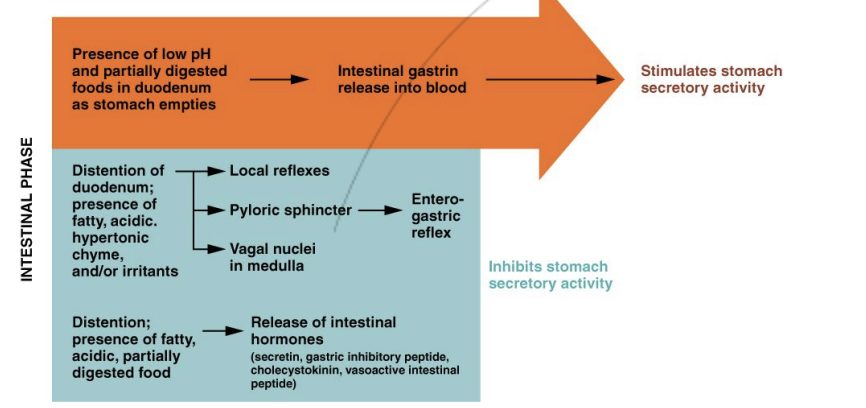Physiological Processes - Digestive System
1/13
There's no tags or description
Looks like no tags are added yet.
Name | Mastery | Learn | Test | Matching | Spaced |
|---|
No study sessions yet.
14 Terms
6 Processes in Digestive System
Ingestion
Propulsion
Mechanical digestion
Chemical digestion
Absorption
Defecation
Process 1:
Ingestion (oral cavity)
Just entry of food into the mouth.
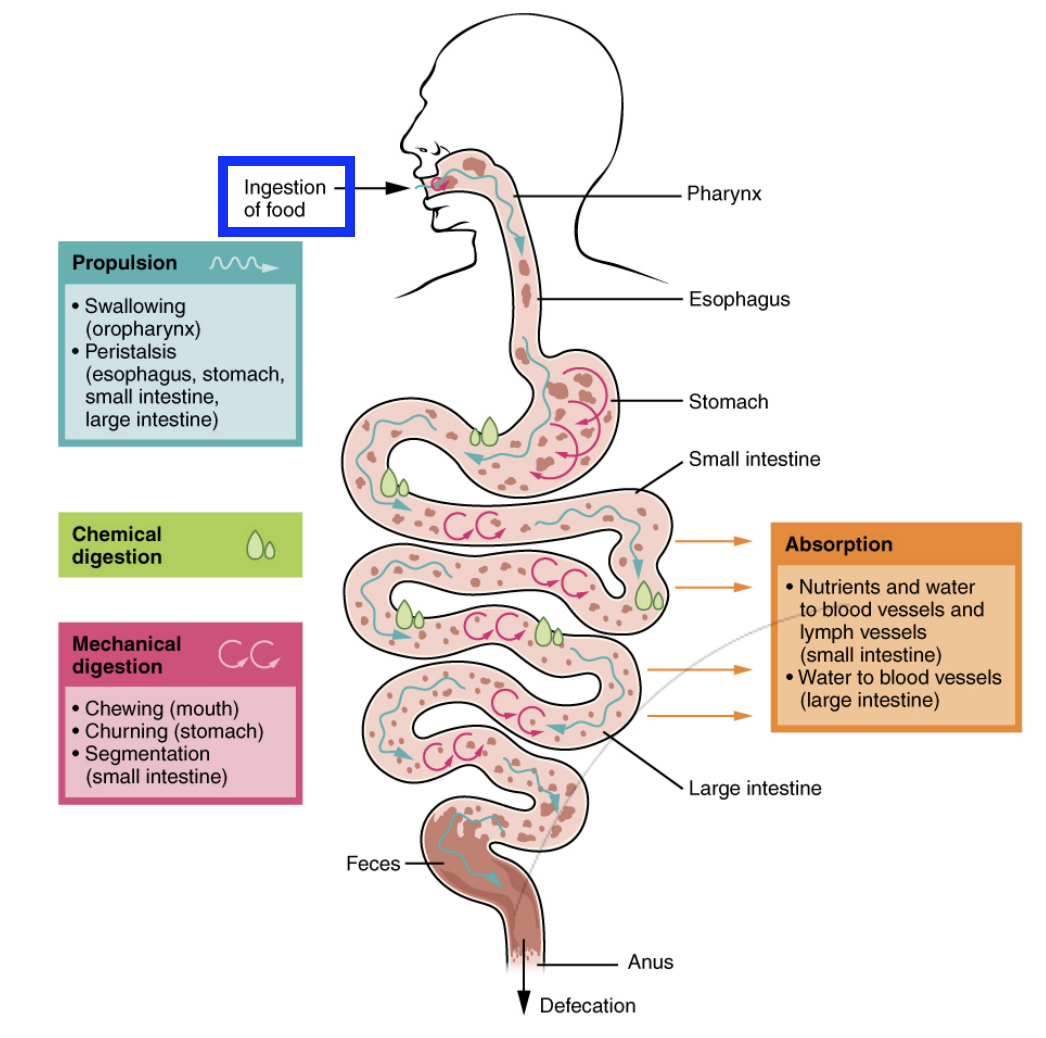
Process 2:
Propulsion (Entire GI track)
Voluntary propulsion of food (swallowing/deglutition) and involuntary peristalsis.
Peristalsis occurs through the entire GI track past the pharynx
Sequential contraction and relaxation of smooth muscles lining the GI track to propel food/bolus/chyme/stool
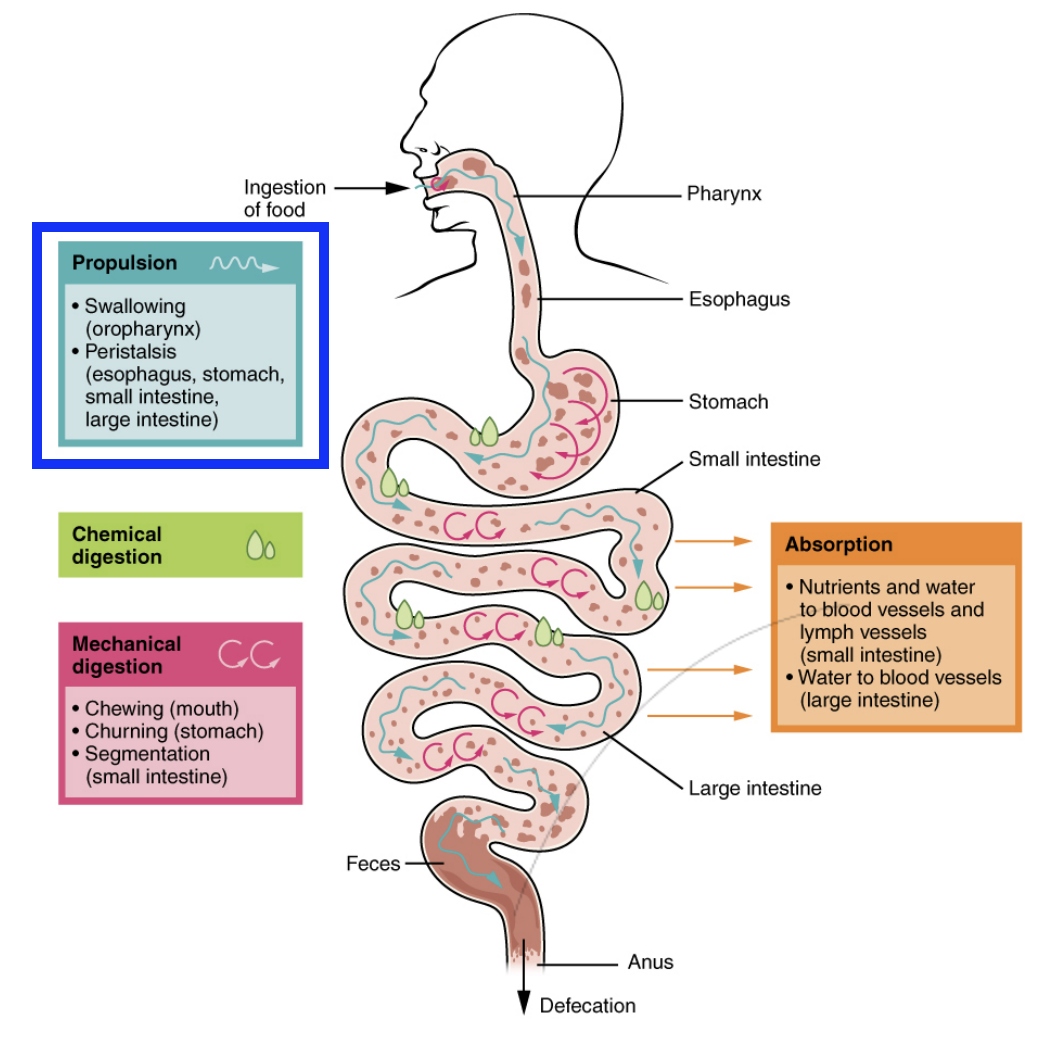
Process 3:
Mechanical Digestion (Teeth, stomach, intestines)
Chewing
Churning of stomach
segmentation of small intestine
Localised contraction of the circular folding in the small intestine
Stops propelling chyme through the small intestine, rather they squash and break up the chyme, slowing it down to increase the time allotted to digestion via enzymes, increasing absorption.
All processes increases access of enzymes to extract nutrients from food/bolus/chyme/stool
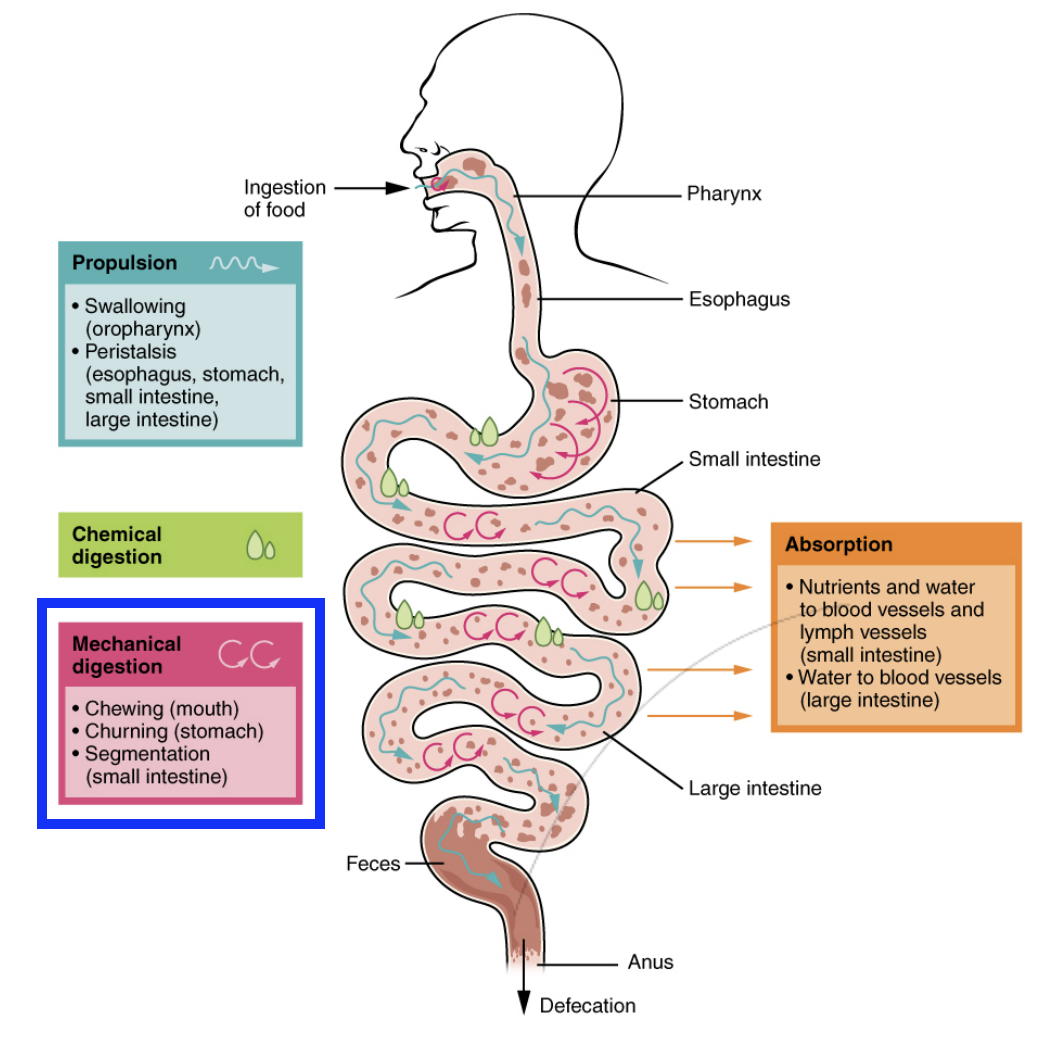
Process 4:
Chemical Digestion (Salivary glands, stomach, liver/gall bladder, pancreas, small intestine)
Saliva - Salivary amylase
Stomach acid - Hydrocholric acid
Liver/gallbladder - Bile
Pancereas - Pancreatic juice
All chemicals contribute to the water present in the digestive system and breakdown of food/bolus/chyme
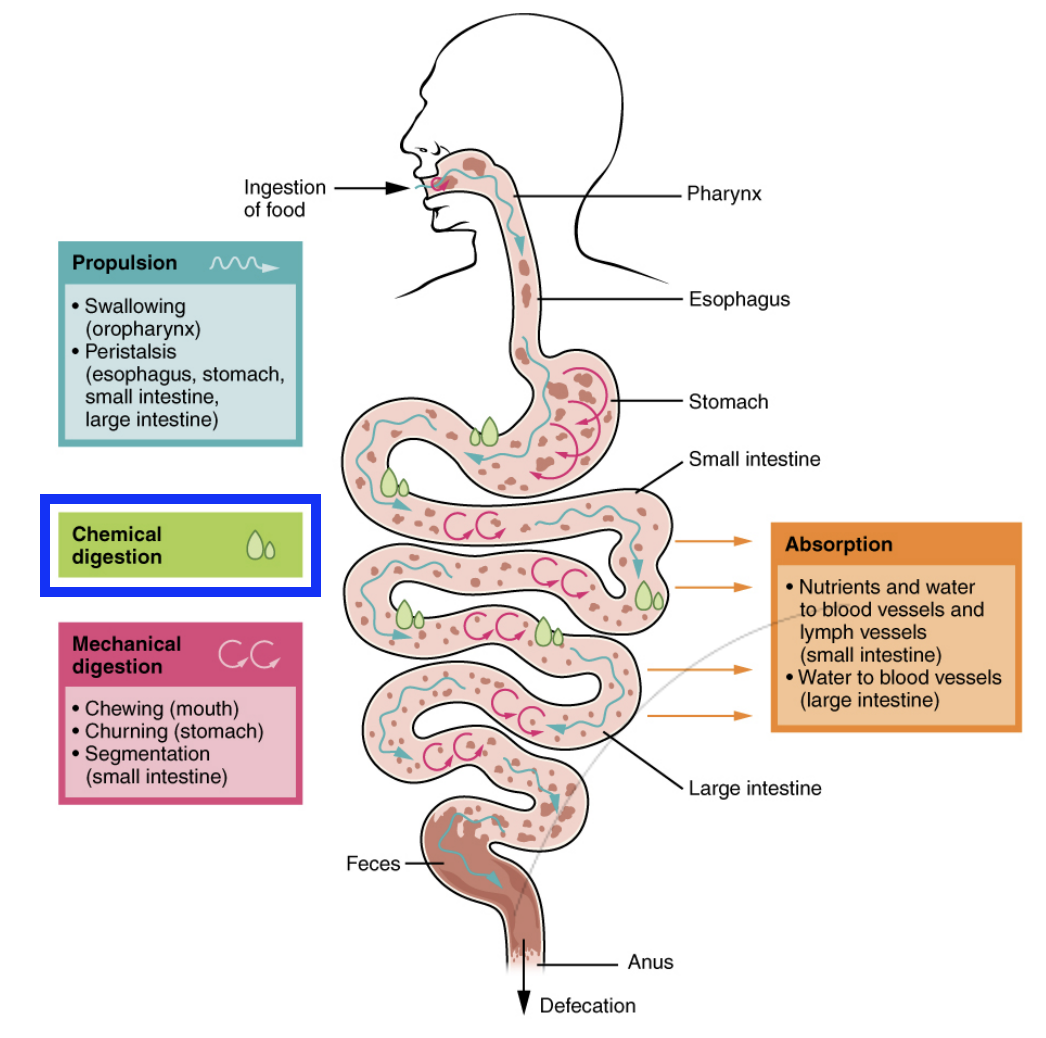
Process 5:
Absorption (Primarily Small intestine)
Movement of nutrients from chyme present in lumen, into the bloodstream.
Small intestine:
Mostly water absorbed
Mostly nutrients absorbed
Large intestine:
Mostly water absorbed
Causes stool to become firm
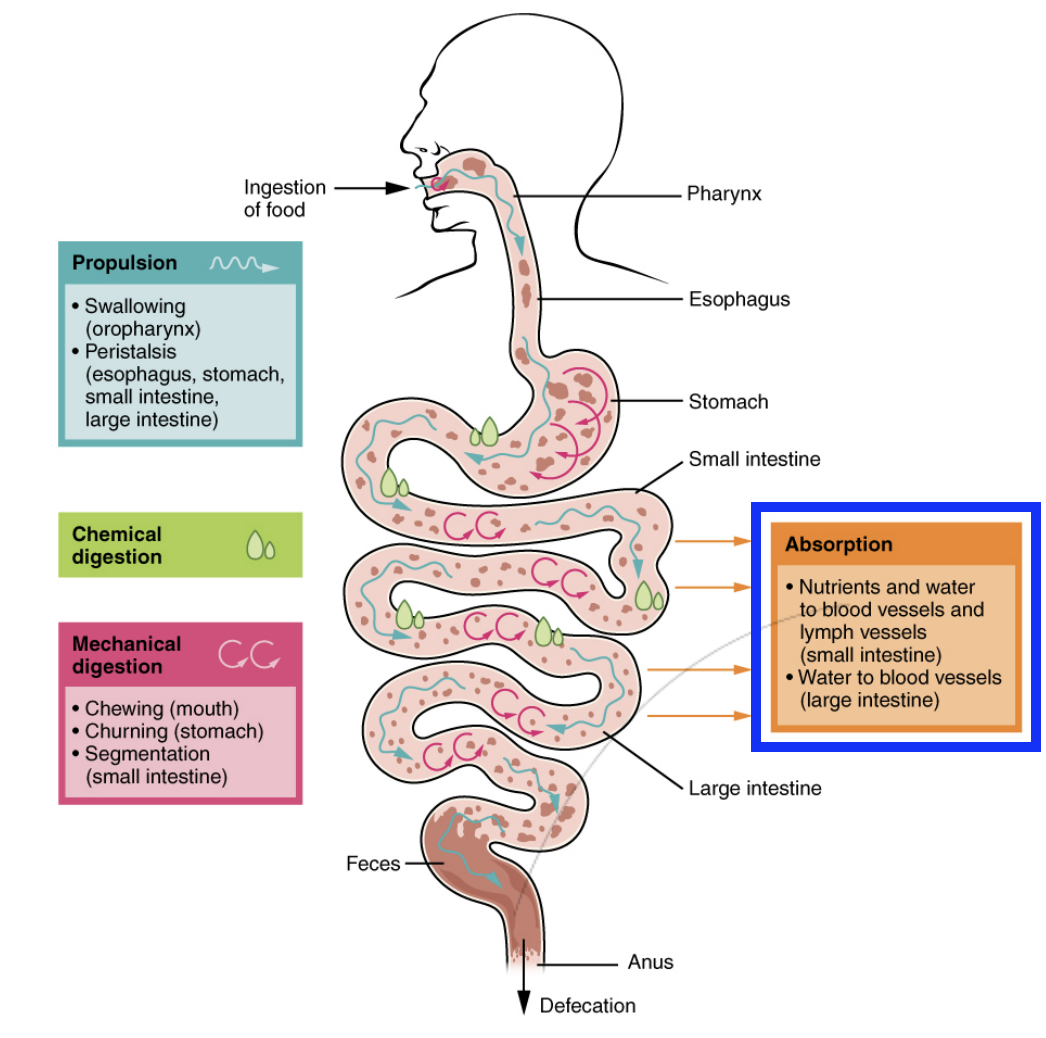
Process 6:
Defecation (Anus)
Undigested material (fecal matter/stool) excreted from the body.
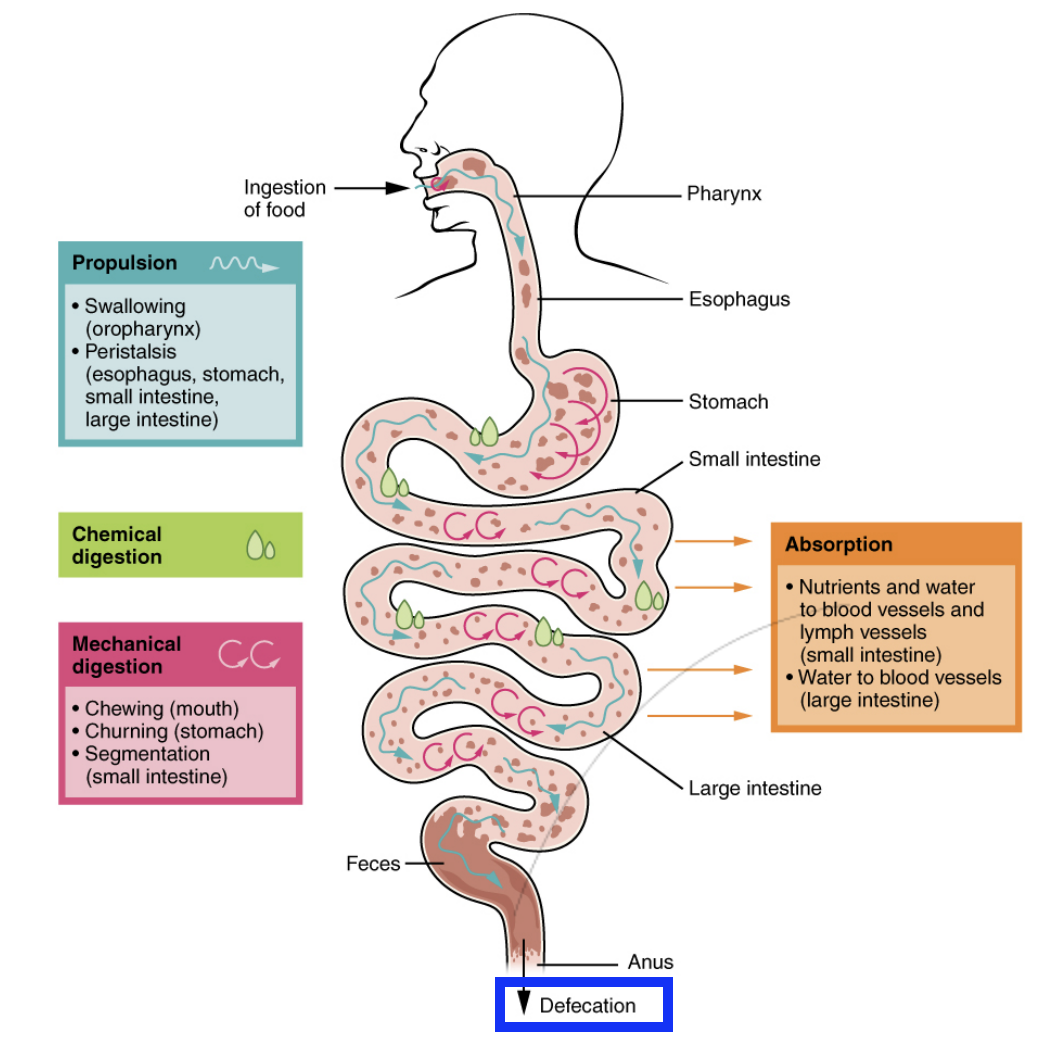
2 Forms of Digestion regulation
Neural regulation
Hormonal regulation
Digestion Regulation:
Neural Regulation
The entire GI track has nerves lining the walls. These nerves interact with the CNS.
Stimulation of mechanoreceptors, chemoreceptors, osmoreceptors (sense concentration changes), presence of food may change pH
Long reflexes
Central (central nervous system) and autonomic (peripheral nervous system), respond to extrinsic stimuli.
e.g walking past a bread shop, smelling tasty bread triggers you to salivate, stomach to release gastric acids & grumble.
Short reflexes
Central (central nervous system) and autonomic (peripheral nervous system), respond to intrinsic stimuli.
Activation of the parasympathetic nervous system (rest & digest response).
Increased secretion of digestive enzymes
Increases stomach motility (spontaneous movement)
Mechanoreceptors trigger stomach distension (stretch)
Decreased movement of the small intestine
Activating the sympathetic nervous system (fight or flight response)
inhibits GI track activity.
Digestion Regulation:
Hormonal Regulation
GI hormones (gastrin & CCK) secreted by:
stomach wall cells
enterocytes in small intestine (wall cells)
Gastrin:
Gastrin is secreted in response to the presence of food
Gastrin stimulates secretion of gastric acid by parietal cells in stomach lining.
CCK (Cholecystokinin):
Secreted by enterocytes in duodenum (small intestine).
Stimulates release of bile from the gallbladder which breaks down fat & protein
Greek: “Chole” - gall bladder
Greek: “cysto” - sac
Greek: “kinin” - move
Greek: “Cholecystokinin” - movement of gall bladder sac
Secretin:
Secreted by enterocytes in duodenum (small intestine).
Maintains pH of the duodenum, neutralising acidic chyme
3 Digestion Phases
Cephalic phase
Gastric phase
Intestinal phase
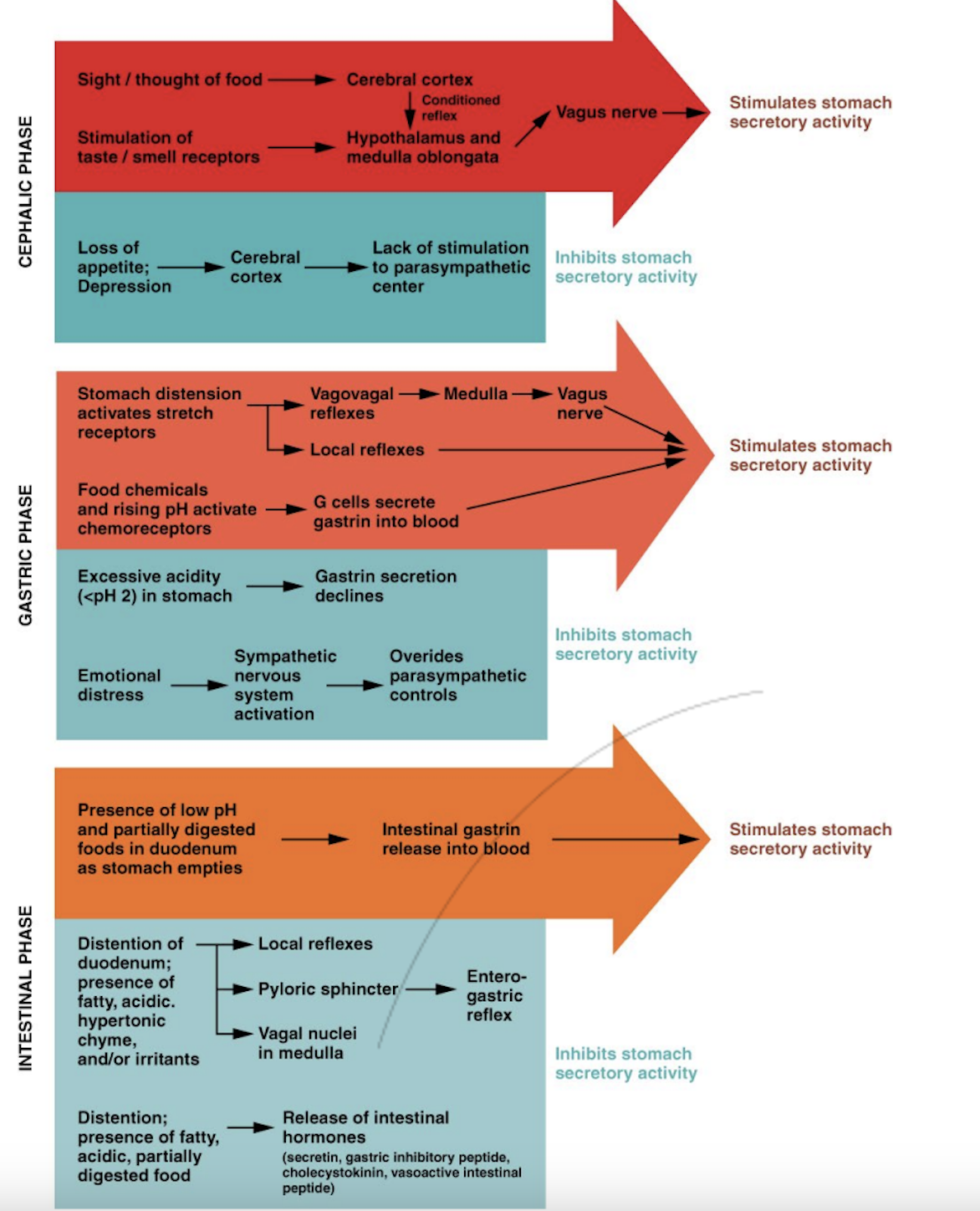
Digestion Phase 1:
Cephalic Phase
Sight & Smell:
Starts before food enters the mouth and involves long reflex control of digestion
Long reflexes of the nervous system can trigger the cephalic phase, activating parasympathetic nervous system.
Gastrin, in turn gastric acid is released from stomach lining to prepare the stomach for food.
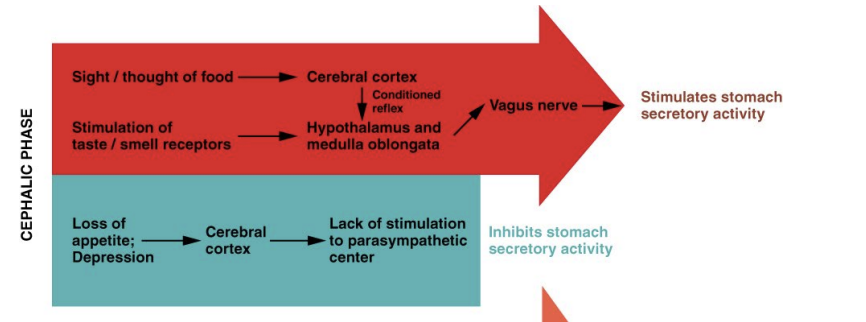
Digestion Phase 2:
Gastric Phase
Distension, pH & hormones:
The entry of bolus into the stomach and involves short reflex control of digestion
Short reflexes & hormones
Stomach responds in the presence of proteins
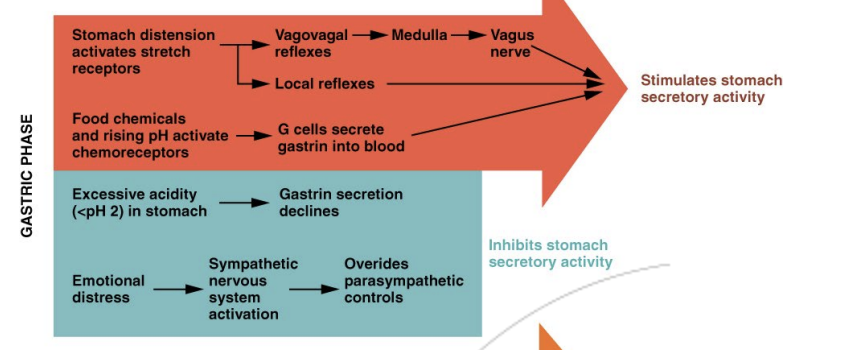
Digestion Phase 3:
Intestinal Phase
Distension, pH & hormones:
Entrance of chyme into the intestines and involves inhibitory signals to the stomach and excitatory signals to the intestines
Short reflexes
Pyloric sphincter contracts to stop excess chyme from entering the small intestine
Small intestine responds in the presence of fatty acids
pancreatic enzymes & bile released
